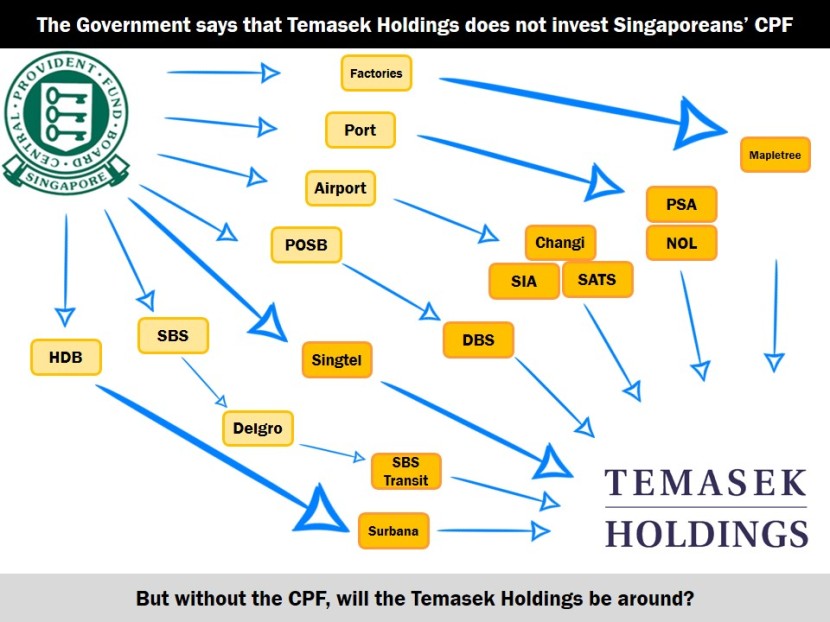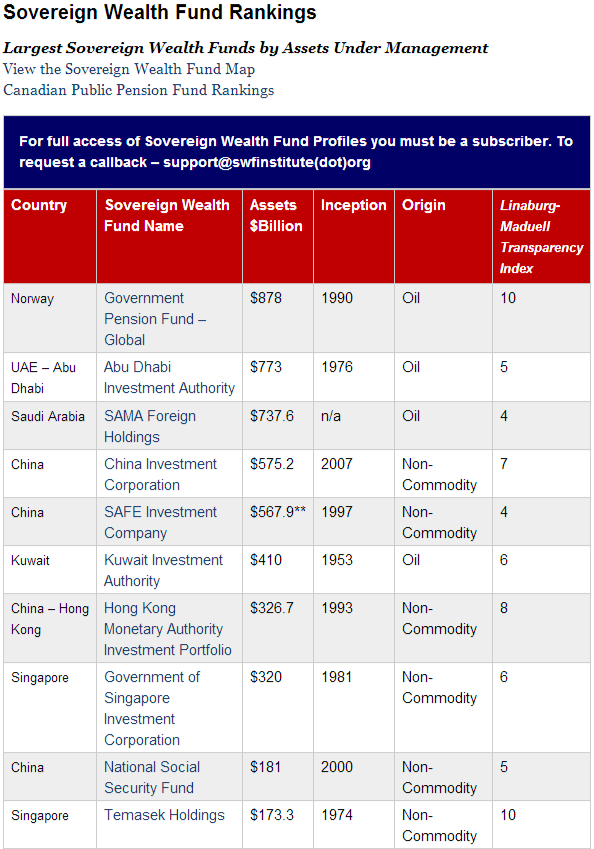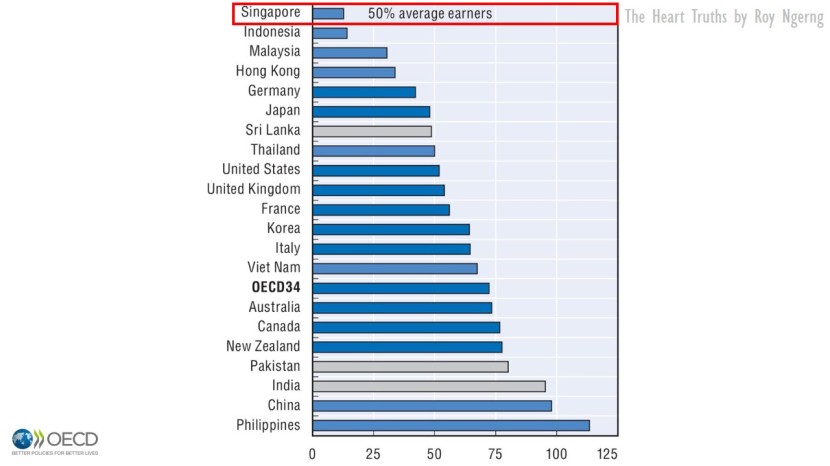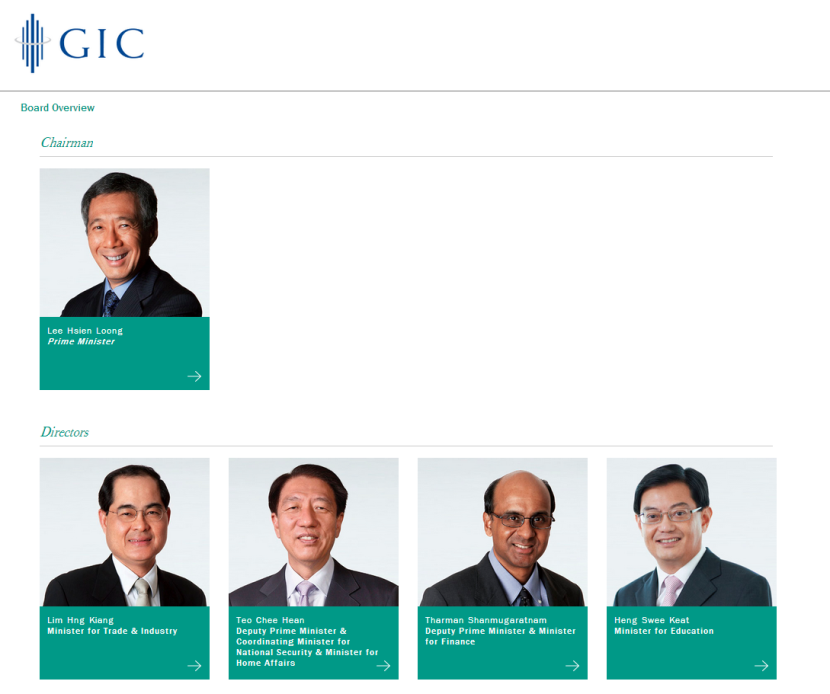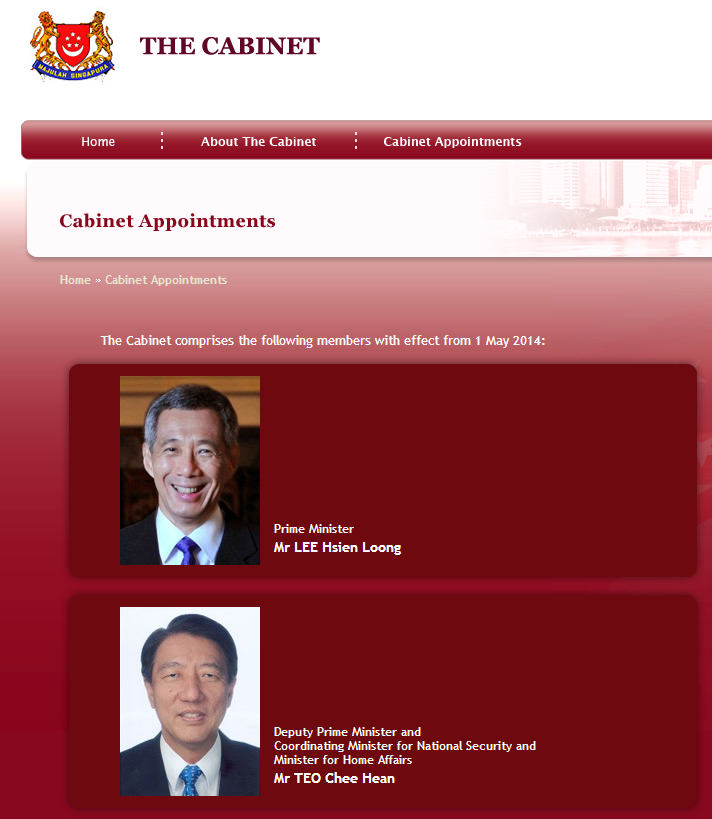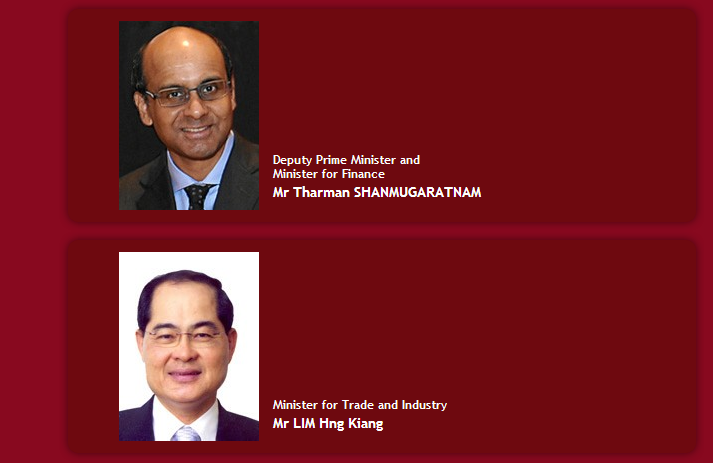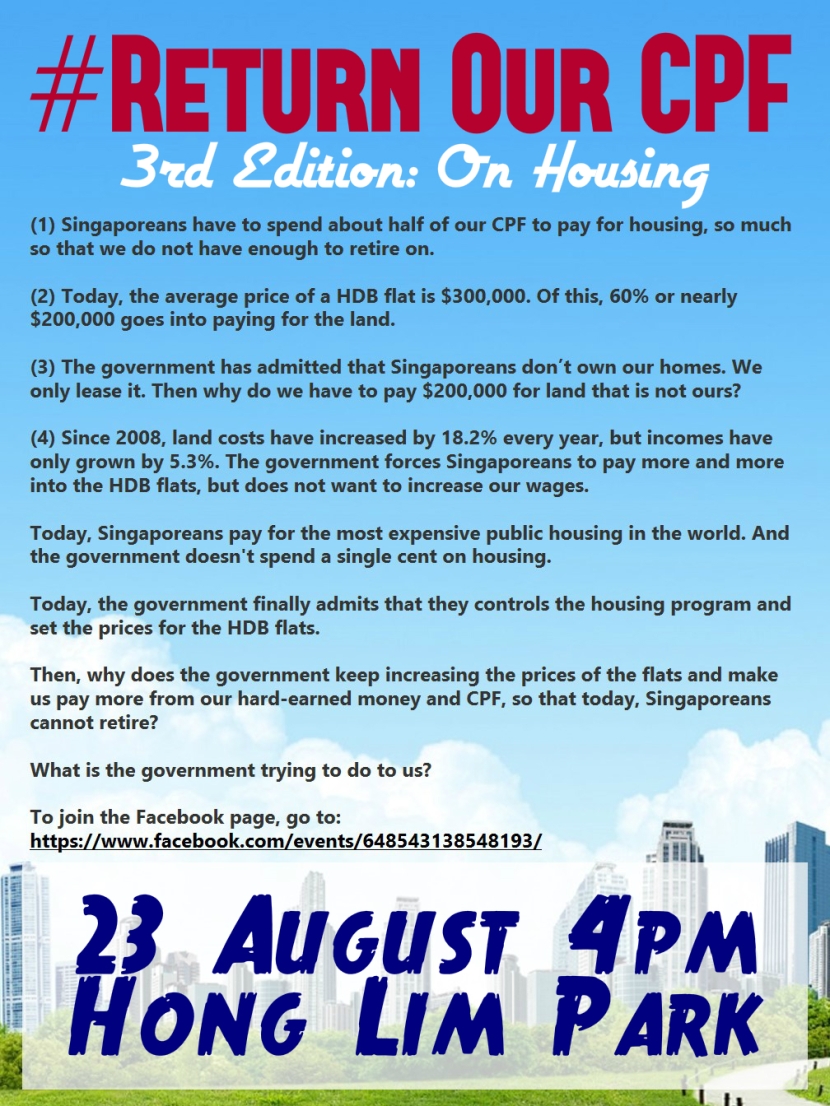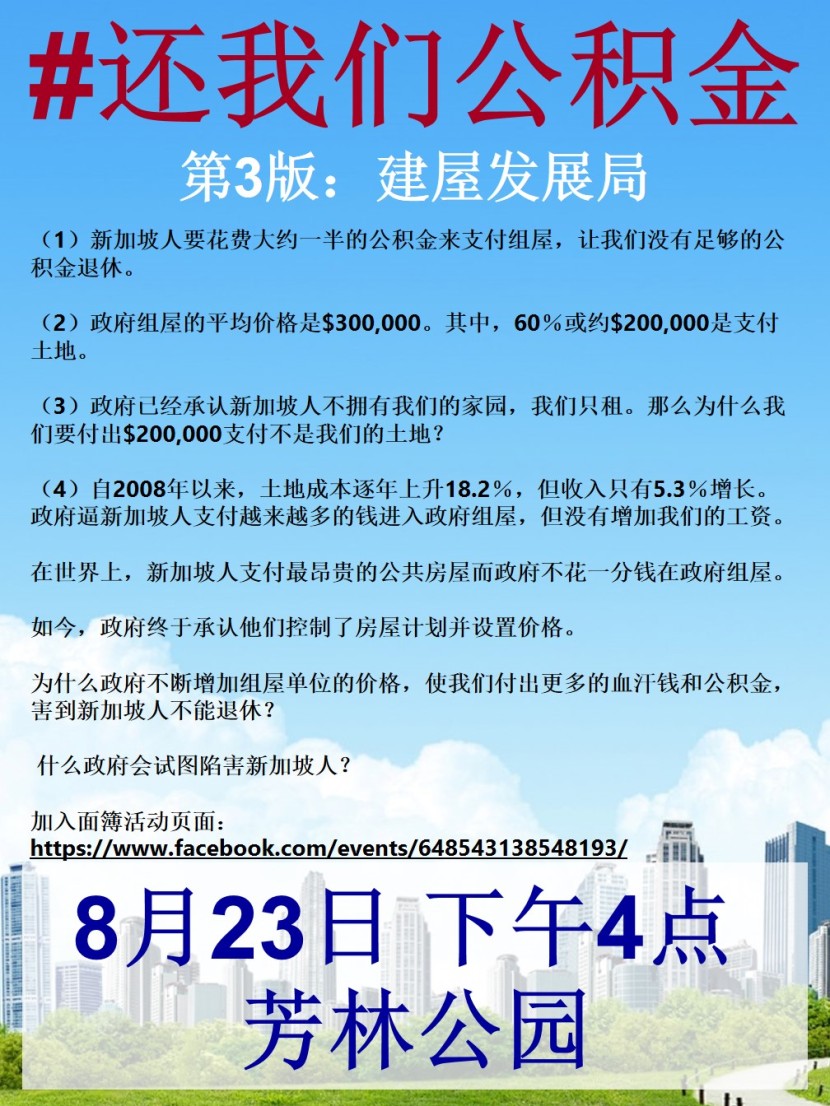Wow. I filed my affidavit for the defamation suit by Lee Hsien Loong yesterday, with evidence on the discrepancies in how the government and the GIC manages the CPF of Singaporeans.
However, none of the mainstream media reported on it. In this time and age, I cannot believe that the mainstream media in Singapore would sideline such an important piece of news about Singaporeans’ CPF!
My fellow Singaporeans, if you want answers to how your CPF is being used, it is up to you now. If you want something to be done to your CPF and for the government to tell you the truth, then please share this article far and wide. The mainstream media won’t do it. They won’t do what they should do – report the news. It is now up to you – it is your duty and responsibility – to share this article if you want to know the truth of what is really happening to your CPF. Share it via Facebook, Twitter, email, WhatsApp, or any other chat apps that you have. Share it. Only then when the truth come out.
I revealed 5 key evidences in my affidavit. Here is a very quick look at what they are here.
(1) The Government Claimed in the Past that They Do Not Take Our CPF to Invest in GIC, But Finally Admits to the Truth for the First Time in June This Year
Before June this year, the GIC claimed that they do not know if they use our CPF funds to invest because it is “not made explicit” to them by the government.
![photo 2 (17)]()
In fact, the government also claims that they do not take our CPF to invest in the GIC, and they did this on at least 3 counts over the past 15 years.
In 2007, then-Manpower Minister Ng Eng Hen also claimed that the GIC does not “use money derived from CPF to invest”.
![lowtk-20070920]()
Chart: Worker’s Party Singapore News
In 2006, then-Minister Mentor and Chairman of the GIC also said that, “there is no connection between GIC’s rate of return and the interest paid on CPF accounts”.
![Screenshot (49)]()
In 2001, then-Senior Minister and also GIC Chairman Lee Kuan Yew also said that, “there is no direct link between the GIC and the CPF”.
![Screenshot (45)]()
However, in June this year, for the first time ever in Singapore’s history, the government “volte-faced on their position” and admitted the truth – that they do take our CPF to invest in the GIC.
![CPF How It Works cropped]()
(2) The Government Deleted Evidence of How Our CPF is Invested in GIC and Temasek Holdings
In 2012 and 2013, I had written two articles that traced specifically on the government websites, which showed how the government indeed takes our CPF to invest in the GIC and Temasek Holdings.
![Where Does Your CPF Go]()
However, by May this year, the government deleted all traces of the evidence. They deleted information on how our CPF (via the SSGS) is invested “in reserves”.
![Slide1]()
They also deleted evidence on how our CPF (via the reserves) is managed by the Monetary Authority of Singapore (MAS), GIC and Temasek Holdings.
![Removed reserves managed by]()
But by June this year, the government admitted to everything, and admitted that they do take our CPF to invest in the GIC. They deleted everything to cover their tracks, but by June this year, they had no choice but to admit to the truth.
![CPF How It Works The Straits Times]()
(3) Temasek Holdings Claim that It Does Not Use Our CPF to Invest but It Did – Were Our Monies Returned?
In June this year, for the first time ever, Temasek Holdings claim that they do not “invest or manage CPF savings”.
![Temasek doesn't invest or manage CPF savings]()
Temasek Holdings also makes this claim on their website.
![FAQs - About Temasek - Temasek]()
The Deputy Prime Minister and Finance Minister Tharman Shanmugaratnam also claims that Temasek Holdings, “has never managed CPF funds”.
![Screenshot (89)]()
Mr Tharman said that, “Temasek started off with a set of assets which were transferred by the Government at time of inception… (of) about $400 million dollars worth of assets in the form of a set of companies.”
![Screenshot (90)]()
However, it is revealed in a speech given by the Minister for Labour and Communications in 1982 that, “CPF savings form a large portion of Singapore’s savings. These savings are used for capital formation which means the construction of new factories, installation of new plant and equipment, expansion of infrastructure such as roads,’ ports and telecommunications, the building of houses and so on.”
![Screenshot (91)]()
Which means that our CPF was indeed transferred into Temasek Holdings, but did the government return to Singaporeans our CPF returned when these companies were privatised and returns were earned?
![Temasek Holdings Did Invest CPF]()
(4) Today, GIC and Temasek Holdings are the 8th and 10th Richest Sovereign Wealth Funds in the World, But Singaporeans Have One of The Poorest Retirement Funds in the World
Today, GIC and Temasek Holdings are the 8th and 10th largest sovereign wealth funds in the world.
![Sovereign Wealth Fund Rankings Sovereign Wealth Fund Institute]()
But Singaporeans have one of the least adequate retirement funds in Asia, according to the Asian Development Bank Institute.
![Slide52]()
We also have the least adequate retirement funds among the highest-income countries, according to the Melbourne Mercer Global Pension Index 2013.
![Slide53]()
Singaporeans also have the least adequate retirement funds in the world, according to the OECD.
![Slide54]()
If so, I had said in my affidavit that, “My point was that something was not adding up. Why was it that GIC and Temasek Holdings were amongst the biggest sovereign wealth funds in the world and yet Singaporeans had one of the least adequate retirement funds in the world? Especially so when GIC and Temasek Holdings (according to the GIC at that time) were managing CPF monies?”
(5) The Government Claims that the Government Does Not Interfere in the GIC, But the Government is the GIC
Finally, the GIC claims that, “The government holds the GIC board accountable for portfolio performance, but does not interfere in the company’s investment decisions.”
![Screenshot (85)]()
The government also claims that, “The Government plays no role in decisions on individual investments that are made by GIC, MAS and Temasek. At the GIC and MAS, whose boards include Ministers, these investment decisions are entirely the responsibility of their respective management teams.”
![Ministry of Finance - Section I What comprises the reserves and who manages them]()
However, I said in my affidavit that, “this is implausible as the head of the Government, the Prime Minister, the two deputy prime ministers and the ministers for Trade and Industry and Education also head GIC as its Board of Directors. It is clearly impossible that the Government “neither directs nor influences the company’s decisions”.
Indeed, these are who are on the Board of Directors of GIC:
![Screenshot (50)]()
![Screenshot (51)]()
And these are the people in the government Cabinet. These are the same people.
![Screenshot (69)]()
![Screenshot (71)]()
![Screenshot (74)]()
GIC also says that, “Once a year, the GIC Management formally meets the Minister for Finance”
![Screenshot (92)]()
But the Finance Minister is also on the GIC Board of Directors so “such a claim is counterintuitive”.
![Screenshot (66)]()
Finally, the GIC says that, “GIC is a private limited company wholly owned by the government. The Ministry of Finance, representing the government, ensures that a competent board of directors is in place; GIC helps by suggesting qualified candidates.”
However, I make clear in my affidavit that, “There is a clear conflict of interest in how the Government and GIC continues to present itself in a mischievous way and to mislead Singaporeans… When the Government appoints itself onto the Board of Directors, and where the selection process is not transparent or made known to Singaporeans, the selection process and the quality of the candidates become doubtful.”
For the government to claim that the GIC “pays no regard to what the source of funds is”, “is clearly impossible, unbelievable and absurd since the Government, and the Prime Minister and Finance Minister no less, who are tasked to be in charge of the overall financial matters of Singapore, is also on the GIC Board of Directors. It is illogical and impossible that the GIC Board of Directors “invests the assets … without regard to the sources of the Government’s funds” when the GIC Board of Directors, by virtue of their positions in Government, would know exactly what the sources of the Government’s funds are,” I said in my affidavit.
The Government is Putting Singaporeans’ Lives at Risk and How the Government Manages Our CPF is a Threat to Our Security
Finally, I said that, “I make clear here that if there has been any allegation of misappropriation by me (which is denied) that certain entities might profit from the peoples’ funds that that allegation is against the Government, GIC and Temasek Holdings, as they do not return to Singaporeans the full amount of investment gains made from investing Singaporeans CPF monies. Neither were they at the time I wrote the Article transparent as to who was managing CPF monies. There is absolutely no basis whatsoever to say that I have accused the Plaintiff of Criminal Misappropriation of Singaporeans CPF monies. I have never accused him of taking a cent of Singaporeans CPF monies and I have no intention to do so as well. It is only persons who are avid for scandal who would say I meant this in the Article.”
In summary, I had said:
Evidently, it is clear that GIC knew where the funds were coming from and that the funds used by them are public funds, but after their knowledge of this was highlighted, GIC changed this information. Thus since it is evident that GIC and Temasek Holdings use public funds and Singaporeans’ CPF monies to invest, it is absurd that GIC and Temasek Holdings are made private limited entities which are not required to disclose full information. GIC and Temasek Holdings use public funds and should not be made private limited companies. Also, a significant pool of GIC’s funds actually do come from Singaporeans’ CPF and it is disingenuous for the Government to delink the two. They and their Board of Directors and the Government have to be fully transparent and accountable to the citizens of Singapore. The lack of transparency and accountability at this level at GIC and Temasek Holdings and by the government is completely unacceptable and disingenuous, and puts the lives of the citizens of Singapore at risk.
I believe that I have a defence to these proceedings as the Article does not in law, bear out the meaning which the Plaintiff solicitors claim it does. Also, as the above clearly bears out, there is a clear case of a lack of transparency and accountability on how GIC, Temasek Holdings and the Government manages public funds and Singaporeans’ CPF monies, and in order for this case to be adequately argued, an open enquiry on this issue is of utmost importance. The Government and the GIC has made numerous changes and flip-flops in their stance, which has been shown to conceal important facts about how the Government and the GIC manages Singaporeans’ CPF. This is disingenuous and remains a threat to the security of how Singaporeans’ CPF are being managed. The Government’s and the GIC’s inconsistencies in their statements and answers pose real risk to the lives of Singaporeans, whom lack of knowledge of how the CPF is being managed, due to the “private limited” nature of the GIC and Temasek Holdings, due to the lack of full annual records of these companies since inception, and due to the conflict of interest posed by the Government also being on the GIC and questions the integrity of how Singaporeans’ CPF is being managed and whether Singaporeans can trust the Government and the GIC to continue to perform in such an unilaterally-non-transparent and accountable manner. These are legal matters for my lawyers to argue in Court and I will leave it to my lawyers to make the legal arguments and for the Court to decide on the legal meaning of the words.”
My conscience is clear and I have always believed in working towards the greater good of our country and for Singapore and Singaporeans. It has always been my wish that when we have a Government which is honest and transparent and estates of governance (i.e. civil service, civil society, think tanks, media, educational institutions etc) are independent of the Government and of one another, will there be clear and strong checks and balances which will prevent such a lack of transparency and accountability from happening, and where the lives of Singaporeans will improve and be protected. The current situation where Singaporeans have been placed at a disservice, due to the lack of information from the Government, MAS, GIC and Temasek Holdings, is due to a lack of checks and balances within the Government and among the estates of governance. Such disservice is dishonourable and requires a thorough examination of the issues at hand. Only when these issues are dealt with rigourously and held accountable to Singaporeans where where the lives of Singaporeans will be truly safeguarded. This is where I have written in good faith from, and which I maintain, towards a just and equal Singaporean society.
If you want justice done, please share this article far and wide. They won’t let us know, but only when we let more people know, will we be able to fight back and let the truth be known. Please share this article.
To read the full affidavit, you can refer to the link below. You can read the affidavit in the first 18 pages. The rest of the pages are annexes.
Roy Ngerng Affidavit to Lee Hsien Loong 4 August 2014
3rd Edition Of The #ReturnOurCPF Event
On 23 August, there will be a third edition of the #ReturnOurCPF event.
Join us at the third edition and take a stand. The government cannot take Singaporeans’ CPF to use and tell us that they do not know what they are using it for. This is a derision to Singaporeans and daylight robbery!
On 23 August, we will see you at Hong Lim Park. Let’s come together, be united and speak for change, for the better for our lives, and our children’s.
You can join the Facebook event page here.
Also, my first court case will be held on 18 September 2014, at 10.00am. It will be a full-day hearing.
![Return Our CPF 3 Poster Template with Text edited with Title]()
![Return Our CPF 3 Poster Template with Text edited with Title@Chinese]()
Roy Ngerng
*The writer blogs at http://thehearttruths.com/























